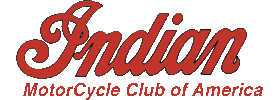Hello,
I'm a new guy here and have some questions about a bike I inherited from my Dad when he passed earlier this year. The bike is a 1941 Indian Chief that he had another guy build for him. It is a bobber style bike that came out really nice. I will try to post some pictures later when I get the chance. After he got this bike completed, he never rode it much. I would say it has about 200 or 300 miles on it. I think he didn't ride it much because it was hard to start, got really crappy gas mileage and he may have been questioning the dependability based on those things. Anyway, I know this thing ran pretty decent because I went for a ride with this guy that built it when it was first finished. I've noticed a couple of things about this bike since he left it to me that I have some questions about. Maybe someone here can help. Here goes.
1. There is no carb mounting bracket. Does it need one? I had problems on my Harley with no bracket eventually ruining the intake manifold seals from vibrations. Can I expect the same here?
2. There is no inspection hole at the top left side crankcase for static timing. Is one of the lower left side crankcase drain plugs used for this on this model? If so, which one and which cylinder will I be setting the timing to?
3. This bike has the 12V conversion with an electronic ignition. Looking down at the distributor, I'm guessing counterclockwise is advanced and clockwise is retarded. Is this correct?
I really want to get this bike going. My goal is to get it to start on the first or second kick every time and be dependable enough to not be afriad to ride it. I know that is what Dad had in mind when he had this thing built. It is a beautiful bike and I want it to ride as good as it looks. Thanks for any help that anyone can provide. Any tuning tips would be helpful.
Its better to have the carb bracket on bottom of float bowl down to little stud in case. Also check that you have the top motor bracket, between the heads above intake manifold bolted to lug on frame. This should be shimmed so theres no stress on head bolts.
Best way to check advance, pop dist. cap off, kick engine, turn dist. in same direction that rotor turned, retard timing to start. I think you'll turn to the left(in toward engine). Don't recall,I just turn grib forward to start and back to go[Image Can Not Be Found].
If there's a timing plug, should be at top center of left case (primary side) flywheel will be stamped with "S" for front cyclinder ( small lobe on dist.) Timing is done on rear cyl. 1/2" BTC, dist. full advanced.Flex wire through plug hole and best guess at 1/2"
Check valve settings, and retorque head bolts if it has not been worked on since intial rebuild. It can be harder to start if valve clearences are loose. 4 thousands intake, 6 thousands exhaust. cold.
41 should have a timing hole but finding the flywheel mark and identifing aTDC or advance mark can take some studying. If bike has been sittting you'll want to go through the carb and get all the junk ethanol gas cleaned out and corrision the water has caused. check battery for full charge.
Hi,
If your engine is an original 1941 Chief CDA serial number unit, there will be no timing hole under the carburetor brace. There is a timing hole but it is very low on the left side of the engine. The timing hole is the upper of the two small plugged holes. If everything is original, the timing marks that can be seen through this hole are for the REAR cylinder, not the front cylinder as it is when the timing hole was added under the carburetor brace in approximately 1944. For one of the better discussions of timing this early 1940s engine, the military Operation and Maintenance manual #TM-10-1333 dated December 15, 1943 can be used. The previous reply for setting the timing that mrindian gives can be used for either cylinder when that cylinder is coming up on compression (both valves closed). Use the narrow distributor lobe when timing to the front cylinder and use the wide distributor lobe when timing to the rear cylinder. Road work will confirm if timing is O.K. If the engine 'kicks back' when trying to start the engine with the distributor fully retarded, the distributor needs more retard. Kick-backs can cause injury, so be careful when adjusting timing.




